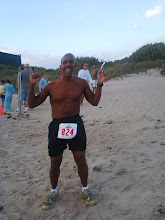Happy New Year everyone. I hope everyone had a great new year. Let's get 2019 off to a better year instead of just resolutions which most people often don't keep. One way is to look at what we achieved and didn't achieve in 2018 and then use it as a guide to improve us.
Look at your workouts. Did you stick with them and if not why?Was it because of illness or injuries? Were there other circumstances? I'm applying such critiques to myself.
In 2018 I certainly had ups and quite a few downs. My running has really gone down, mostly due to incredible stiffness , especially quads and hip flexors, which has blocked proper mechanics. These muscular imbalances have prevented the right muscles from firing ( glutes, hamstrings) . I was slowly starting to improve but hit major roadblocks with hamstring pulls as well as my right hip locking up. You may also have muscular imbalances which are preventing you from correct training and achieving your goals.
How do you fix it? There are corrective exercises such as exercises with bands or very light dumb bells. You could also use a foam roller as well as recovery activities like Yoga or Tai Chi Chuan. I've done some of those and they have helped although I won't lie, I haven't done them enough. You may want to consider professional help, such as massage therapy or a chiropractor as well as a coach in your specific activity.
One thing that'll really help is keeping a log of your training activities, either on line or paper. Take note of the factors such as energy levels, warm ups , weather,etc. Use that as a guide to see how you did , especially when you did very good or bad. What were your strong points and what were your weak points?
Keep training your strong points but definitely work on your weak points that are holding you back. I did that. While my running , as well as overhead pressing were weak I was able to improve my back and grip strength , especially towards pull ups. I finished 2018 on Saturday , December 29th setting a new personal best, 22 pull ups...barely!!
There were a few other reasonably good moments. The Murph Challenge on Memorial Day which I detailed in June. I also competed as usual in the Navy UDT/SEAL Museum 5 K. I didn't set any records. I was however able to finish without walking.
I also competed in my first Thanksgiving Day Turkey Trot 5 K in Palm City. Again my goal was to run non stop which I did.
I've since had ups and downs as I mentioned but I'm not going to quit. I'm looking at what's working and what isn't, and what can help and what hinders. I'd also urge you to do the same and make 2019 a successful year!
Be sure to like and follow this blog and email me@mbrls2000@yahoo.com if you have any fitness questions you'd like me to answer.




